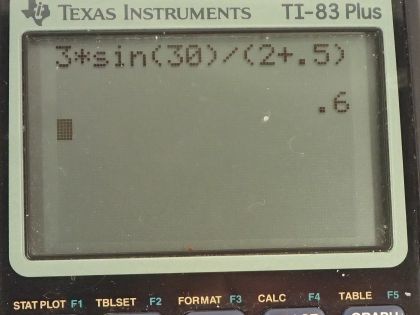Question
White light is passed through a diffraction grating to a screen some distance away. The nth-order diffraction angle for the longest wavelength (760 nm) is . Find the nth- order diffraction angle for the shortest wavelength (380 nm). What will be the change in the two angles if the distance between the screen and the grating is doubled?
Final Answer
Solution video
OpenStax College Physics for AP® Courses, Chapter 27, Problem 10 (Test Prep for AP® Courses)

vote with a rating of
votes with an average rating of
.
Calculator Screenshots
Video Transcript
This is College Physics Answers with Shaun Dychko. Light is being passed through a diffraction grating and we are told that the nth order bright fringe for the wavelength 760 nanometers is 53.13 degrees and I put a subscript L here to say long wavelength so the longest wavelength gets this particular angle to the nth order bright fringe and we are told that the smallest wavelength—and so subscript S for small— is 380 nanometers and the question what will be the angle to its nth order maximum? So here's the formula for the bright fringes in a diffraction pattern so this is the spacing between each of the little slits in the diffraction grating times by sin of the angle and that equals the order times the wavelength. So in the first case, we have d times sin Θ for the longest wavelength equals the nth order bright fringe and so I put in the letter n there instead of m multiplied by the long wavelength and then on the other hand for the small wavelength, we can say the same spacing between lines in the diffraction grating so I do not need a subscript S here nor L there— there's no need for subscript because the spacing doesn't change, it's the same grating being used— so d times sin Θ S because this is going to be a different angle for the small or short wavelength equals n—the same order maximum— times by the smallest wavelength. So we can divide these two equations and we are going to figure out what Θ S will be so we have equation 2 divided by equation 1. So the left side has dsin Θ S over dsin Θ L and that equals nλ S over nλ L, the ends cancel and so do the d's and then we can multiply both sides by sin Θ L and we get sin Θ S is λ S over λ L times sin Θ L. So we take the inverse sin of both sides to solve for Θ S. So the angle then for the shortest wavelength to the nth diffraction angle is the inverse sin of 380 nanometers divided by 760 nanometers times sin of 53.13 degrees and that is 23.6 degrees. And notice just for convenience, we didn't need to convert these units into meters although we could have... we could have written 380 times 10 to the minus 9 meters— that would be fine— and likewise down here times 10 to the minus 9 meters but because they are divided, the only thing that's important is that the units are the same and they are both nanometers so that's fine. Part (b) of the question asks if the screen is moved twice as far away, does that change the answer? And no, it doesn't because if this was where the screen was originally on the blue line and then we move it to where the black line is sure it will change the vertical distance between the center line and the bright fringe these distances will be the same but the angles or sorry... these distances will be different I should say but the angles will be the same because in these two triangles, where they are both right triangles they share this angle and so while the triangles are similar and the angle is going to be the same regardless of where the screen is.
